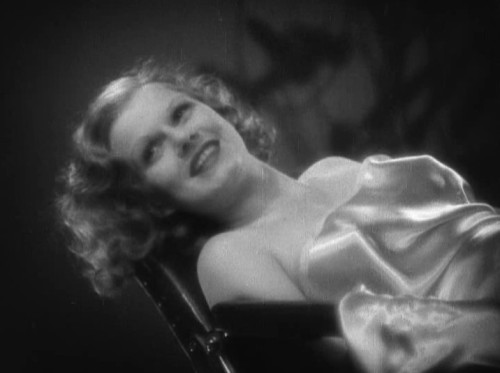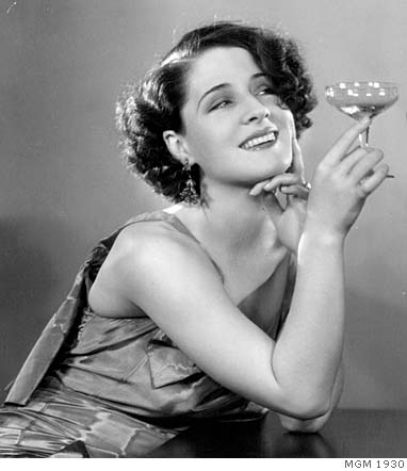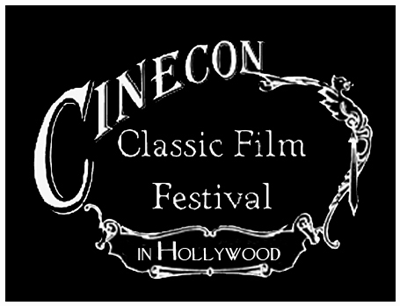
The 8th annual TCM Classic Film Festival came to a close this weekend, and since Sunday night, fond memories and farewells have flooded social media. The photos of fans boarding their planes home, sadly telling their friends they’ll see them next year, tug at our hearts and serve as reminders of what this festival means to so many of us.
In day-to-day life, classic film fans of this caliber often have trouble meeting like-minded people. The chance of meeting a person on the street who can talk at length about the Motion Picture Production Code, the Best Actress Oscar winner for 1950, or the final scene of The Heiress is a slim one at best. “Thank goodness for the internet,” is an oft-repeated phrase among classic film fans. “I thought I was the only one.” At the festival, all of us “only ones” convene, creating what has lovingly been referred to as the “TCM vortex.” Nothing matters except the movies on the screen, and watching them with people who love them too. It’s a world all its own.
This was my 6th festival, my 5th with Backlots as a member of the media. I attended the press conference on Wednesday afternoon, which included TCM host Ben Mankiewicz, programmer Charlie Tabesh, vice president of branding/partnerships Genevieve McGillicuddy, and general manager Jennifer Dorian. We heard some very positive things from the conference, including word of the wild success of the Fathom Events screenings, which have sold over 2 million tickets so far this year. At the beginning of 2017, TCM partnered with Fathom Events to bring classic movies to the big screen once (and sometimes twice) a month nationwide, often playing at theaters in the AMC chain. From the beginning, I was excited about this partnership, hoping for its success. I’m very glad that it seems to be working out beautifully for all involved.
We also received word that the next free online course through Ball State University will be on the movies of Alfred Hitchcock. Ball State University partnered with TCM last year for a class on the history of slapstick, and before that for a course on film noir. The classes are always exceedingly popular, and based on the interest in Alfred Hitchcock within the TCM community, I predict that this class will be a great success. If you would like to sign up, here is the place to do it.
TCM does a marvelous job procuring top-notch guests for the festival–this year’s guests included Sidney Poitier and Norman Jewison for the opening night screening of In the Heat of the Night, Lee Grant for a discussion of her life and work in Club TCM, Carl and Rob Reiner for a hand/footprint ceremony at (what will always be) Grauman’s Chinese Theater, and celebrity family members Kate MacMurray (Fred MacMurray’s daughter) and Wyatt McCrea (Joel McCrea’s grandson) to be interviewed before movies. At the press conference, I asked if there was any method to their solicitation of festival guests. Charlie Tabesh responded that many guests are very eager to come, and ask on their own accord, while the festival has tried to get other guests for many years, but they’re not able to make it. Age seems to be very much a contributing factor to this–in recent years, the festival has been leaning toward children of stars more than stars themselves, due to the dwindling number of classic Hollywood stars who are still with us, and the physical frailty of those who are.
Among my group of friends, the schedule for this year’s festival was the most anticipated of any year, with such favorites as The Palm Beach Story (1942), The Awful Truth (1937), Red-Headed Woman (1932) and Theodora Goes Wild (1936). Factor in the nitrate screenings of Black Narcissus (1947) and Laura (1944), and it was one of the greatest programs in festival history, from my perspective.
Red-Headed Woman turned out to be one of my biggest festival joys, introduced by Cari Beauchamp, the author of Without Lying Down: Frances Marion and the Powerful Women of Early Hollywood. Beauchamp is a beloved presenter at the festival, the go-to expert on women in early Hollywood, and the introduction of Red-Headed Woman was a prime example of what I look for in an intro. The TCM Festival crowd is an intelligent one, and most of us know these movies well. Instead of relating plot points or trivia bits, the introduction to Red-Headed Woman focused on backstory and studio politics, and the effect of movies like it (featuring strong, unapologetically sexual women) on the strengthening of the Motion Picture Production Code in 1934. The pre-code era holds a special place in my heart, and an item of particular interest in the introduction was the difference between the way the Hays office (the earlier enforcement arm of the code) and the Breen office (that followed Hays) operated. The Hays office would actually see the movies, while the Breen office would only read the scripts–thus allowing filmmakers to get away with close to anything using costumes and lighting.
Among my favorite things to do in a theater when a classic movie is showing is to glance back at the audience. It gives me an indescribable feeling to see hundreds of people watching a person from 80 years ago, likely someone long gone from this earth, flicker on the screen. That pleasure seems especially meaningful when the movie features Jean Harlow, who died of degenerative kidney disease at the age of 26 at the height of her career, but has remained one of the most alluring stars of any era. Watching the audience watching Harlow seemed to embody what Beauchamp said when introducing the film: “Jean Harlow lives!”

As for the overall feel of the festival, I noticed a few differences between this one and previous festivals. This year’s staff seemed larger, contributing to a few snags in communication relating to line management. It was a situation that could have easily have been rectified had there been about half the staff. Despite some initial discomfort and a few panicked moments, I did manage to get into everything I wanted and the line team was always gracious and pleasant in the midst of the pressing crowds and general chaos of impatient film fans. I struck up a conversation with a lovely young line staffer at the Chinese Multiplex while I was in line for Born Yesterday, and she knew who Marion Davies was. Instant friend.
I would like to send TCM a huge thank you for the change they made regarding the pre-codes this year. It made me very happy to see that the festival remembered the two sold out showings of Double Harness last year, and made sure to put the pre-codes in the big theaters. This time, instead of selling out in the small Chinese Multiplex theaters, the movies played at the huge Egyptian Theatre–to packed houses, but no turn-aways. The festival’s love for pre-codes was something that I and many others noted in our post-festival wrap-ups last year, and it was clear that they listened.
Thank you, TCM, for another great festival, thanks to all my festival friends for giving me such a beautiful community, and thanks to my readers for following along so diligently. Here’s to next year!




_NRFPT_04.jpg)




































_03.jpg)

